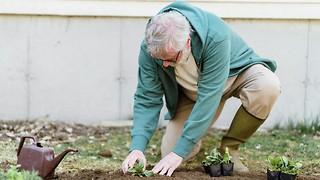Four days in North Korea: part four
Ms Ba led us outside, through a dank underground pass and into a busy square in front of the railway station. We were in Pyongyang and it felt surreal.

The country’s capital is reserved for government officials and those who have demonstrated allegiance to the Party. Life in the showcase capital is far more comfortable than in countryside villages. Our tour itinerary would mainly be confined to Pyongyang, with daytrips to specific sites before returning to our hotel every night. It was North Korea’s opportunity to show their country in a favourable light, to instil their politics and to win us over. I knew that I would have to look past the theatrical display to try to catch a glimpse of real life.
Having said that, what struck me most during my time in Pyongyang was the undeniable modernisation. The iconic “traffic ladies”, on whom observers of North Korea oddly fixate, who stand in the middle of junctions to direct cars, are gradually being phased-out in favour of traffic lights. The need for road management is increasing as the number of cars rises, although traffic is still remarkably light for a capital city. The recently built Mansudae Apartment Complex, purportedly completed in just 100 days, is impressive and even – dare I say it – swanky, although this is compared with the other housing blocks throughout the city, which are rather grim.
The most conspicuous development in the city is the Ryugyong Hotel, a 105-storey pyramid-shaped skyscraper. If it had been completed on time by 1989 it would have been the world’s tallest hotel at that time, but following the collapse of the Soviet Bloc the money ran out and construction stopped. The incomplete concrete shell haunted the city’s skyline for 21 years as a continual reminder of the regime’s failure to deliver. But in the last four years work has resumed and now its shiny blue glass dazzles across the city, in a way uncomfortably similar to The Shard in London. It still remains offensively out-of-place – an idiosyncratic trace of futurism in a city of out-dated revolutionary monuments – but it is perhaps a testament to the country opening up and reforming its economy.
The square in front of us was bustling. Men dressed in crisp black suits walked determinedly to work; old women trundled past, hunched over under the weight of canvas bags on their backs; and a crowd sat around a large LED screen. We were told that the screen is used to show films and dramas, although while I was there it was, all too predictably, broadcasting Party news. It was a busy scene of a seemingly functional city and it all appeared surprisingly normal. We were hurried onto a bus and driven to our hotel, the Yanggakdo. Since our days would be structured around a pre-determined itinerary and we would always be shepherded by our guides, it only made sense that the hotel was located on an island. Each evening, upon returning to the hotel, we were furnished with various reasons why we should not attempt to leave the island, ranging from the silly – “you don’t have your passports so you better stay here” – to the sinister – “it’s probably for the best you remain on the island”. There was always an unspoken danger about what would happen were we to cross the bridge and venture into Pyongyang unaccompanied.
To prevent curiosity from getting the better of tourists, the Yanggakdo has some pretty impressive facilities on offer. There was a casino, a bowling alley, a revolving restaurant, a (very cold) swimming pool and even an Egyptian-themed karaoke bar.
As soon as we arrived at the hotel we were treated to a wonderful dinner in the Banquet Hall. With plate upon plate of different meat and fish dishes – including some particularly peppery chicken – and bottles of local beer, it was the dinner we had been craving after such a painful train journey. Members of our group speculated as to whether this was an attempt to dispel the notion that starvation remains a problem. Food has been a sensitive topic in the country ever since the Arduous March (a government-sponsored term), the disastrous food shortages of the mid-90s. Economic mismanagement paved the way but ultimately horrific storms and flooding precipitated the famine in which it is estimated that 3.5 million people died. Even now it is reported that on average North Koreans are three inches shorter than their South Korean counterparts simply because their growth is stunted by malnutrition.
To read earlier instalments:
Part One http://www.varsity.co.uk/lifestyle/4842
Part Two http://www.varsity.co.uk/lifestyle/4844
Part Three http://www.varsity.co.uk/lifestyle/4845
 News / Uni Scout and Guide Club affirms trans inclusion 12 December 2025
News / Uni Scout and Guide Club affirms trans inclusion 12 December 2025 News / Cambridge Vet School gets lifeline year to stay accredited28 November 2025
News / Cambridge Vet School gets lifeline year to stay accredited28 November 2025 News / Cambridge study finds students learn better with notes than AI13 December 2025
News / Cambridge study finds students learn better with notes than AI13 December 2025 Science / Did your ex trip on King’s Parade? The science behind the ‘ick’12 December 2025
Science / Did your ex trip on King’s Parade? The science behind the ‘ick’12 December 2025 News / Pembroke to convert listed office building into accom9 December 2025
News / Pembroke to convert listed office building into accom9 December 2025







